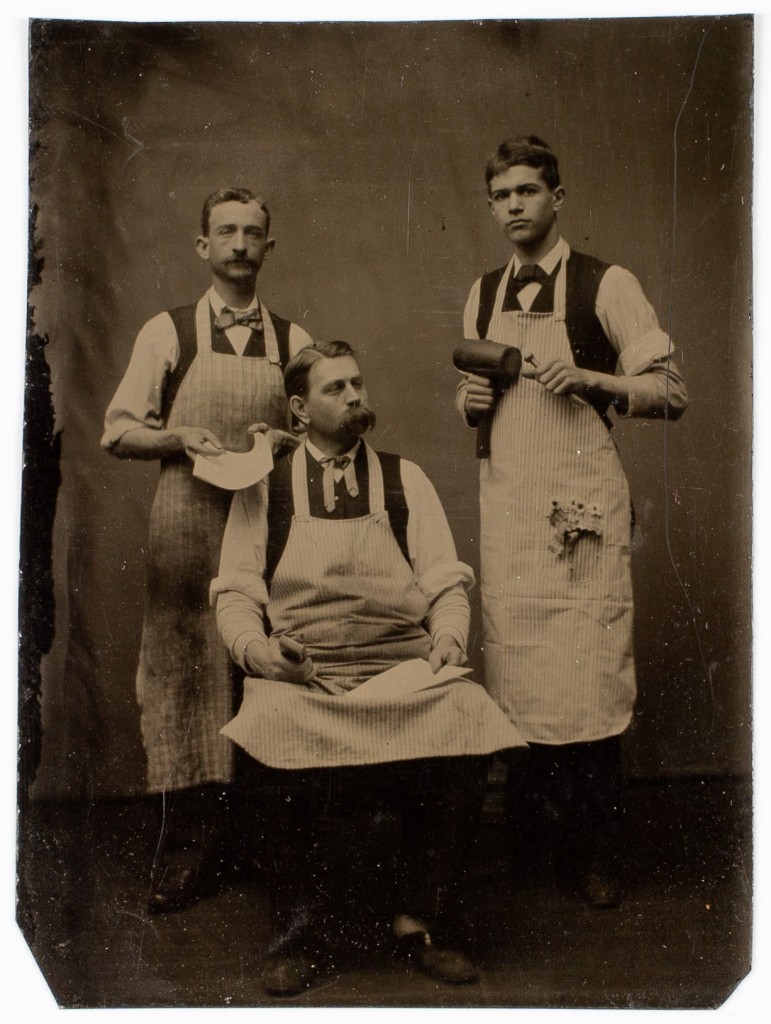 Recently, AAS purchased two photographs depicting American newspaper printers, one on eBay and the other at a local auction in central Massachusetts. These images capture working men posed in photographic studios, holding props and tools of the trade. When viewed with two additional photographs already in the collection, these portraits capture the likenesses of people who produced small regional newspapers and job printing around the turn of the twentieth century, from Quebec to central Alabama.
Recently, AAS purchased two photographs depicting American newspaper printers, one on eBay and the other at a local auction in central Massachusetts. These images capture working men posed in photographic studios, holding props and tools of the trade. When viewed with two additional photographs already in the collection, these portraits capture the likenesses of people who produced small regional newspapers and job printing around the turn of the twentieth century, from Quebec to central Alabama.
The earliest image in the group is a ca. 1890 tintype of three men. Edward Wilton Carpenter is seated at center and is flanked by two unidentified men, who stand and hold tools and paper. Carpenter was a resident of Amherst, Massachusetts, and was also the co-publisher of the Amherst Record. The Record started in 1868 and had gone through several owners before it was purchased by Carpenter and a partner in 1890. Carpenter was also an author and in 1896 he wrote The History of the Town of Amherst, a general narrative about the town with a reprinting of town meeting records going back to the eighteenth century.
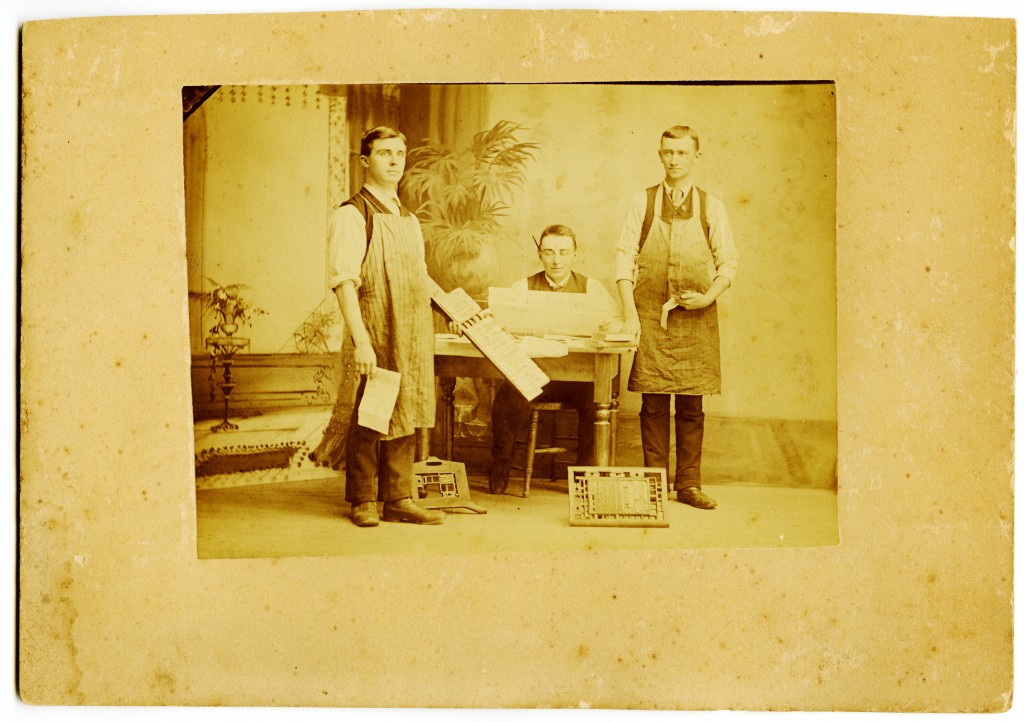 The second image, also from the 1890s, shows three unidentified printers in a different photographic studio. The bespectacled central figure is seated, but instead of looking at the camera, he is intent on reading a copy of the Slatington News, published in Slatington, Pennsylvania. Two printers wearing ink-soiled aprons stand on either side. The man at left holds a line of large wooden type which reads JOB PRINTING. Displayed on the floor are two printing chases with locked-in type. None of the three men are identified and the history of the paper, like the Amherst Record, contains numerous changes in ownership and editors starting from the founding (1868) up until the twentieth century. The style of the men’s clothing and photographic details indicate an 1890s date. James Rauch bought the paper in 1898 after working as the editor there for at least ten years, so one of the men could be a young Rauch.
The second image, also from the 1890s, shows three unidentified printers in a different photographic studio. The bespectacled central figure is seated, but instead of looking at the camera, he is intent on reading a copy of the Slatington News, published in Slatington, Pennsylvania. Two printers wearing ink-soiled aprons stand on either side. The man at left holds a line of large wooden type which reads JOB PRINTING. Displayed on the floor are two printing chases with locked-in type. None of the three men are identified and the history of the paper, like the Amherst Record, contains numerous changes in ownership and editors starting from the founding (1868) up until the twentieth century. The style of the men’s clothing and photographic details indicate an 1890s date. James Rauch bought the paper in 1898 after working as the editor there for at least ten years, so one of the men could be a young Rauch.
These two images join two other photographs of printers already at AAS. In 1894, an unknown photographer made the image above of African Americans learning the trade of printing in an educational print shop. One of a collection of over fifty views showing the Tuskegee Institute (today Tuskegee University), founded in 1881 by Booker T. Washington, this image brings the viewer out of the studio and into the printers’ work space. The photograph includes nine students, two setting type in the foreground with others posed near belt-driven presses. This shop produced annual reports, invitations, and notices issued by the Institute, as well as the Southern Letter, a small paper that followed the progress of the school’s leaders and students in the 1880s and 1890s. Here the students do not wear aprons but instead are working in vests and shirtsleeves, learning by doing, and helping disseminate information about their school in the process.
Finally, the fourth photograph, also already housed at AAS, brings the viewer into a commercial print shop. This image is the latest in the set, taken around 1900 in a Three Rivers, Quebec, business. The photographer, J. Guthorn of the New York Photo View Company, employed the recently invented technology of flash powder, evident in the reflections on the presses and the washed out appearance of the fellow at center holding the large composing stick. The 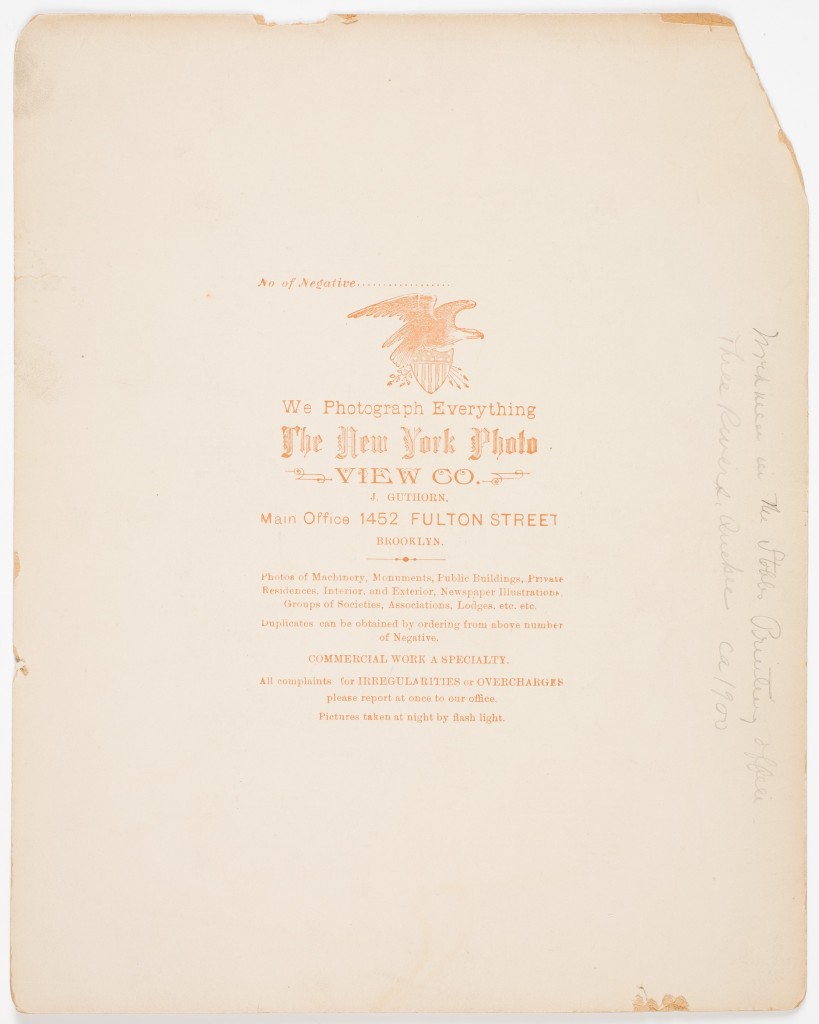 photographer’s label promotes this new technique stating, “Pictures taken at night by flash light.” Unlike the earlier studio images and the Tuskegee promotional shot, this photograph gives the viewer a good sense of the interior of a typical small commercial printing house, with heavy presses set on the ground floor, dim light, oil cans at the ready near the machinery, and discarded paper all over the floor. The printers clearly occupied tight quarters during working hours. In this shot we have five employees, three presses, and examples of printed work pinned up on the wall. An inscription on the back of the picture indicates the space was owned by the Stobbs Printing Office, which was founded in the 1850s.
photographer’s label promotes this new technique stating, “Pictures taken at night by flash light.” Unlike the earlier studio images and the Tuskegee promotional shot, this photograph gives the viewer a good sense of the interior of a typical small commercial printing house, with heavy presses set on the ground floor, dim light, oil cans at the ready near the machinery, and discarded paper all over the floor. The printers clearly occupied tight quarters during working hours. In this shot we have five employees, three presses, and examples of printed work pinned up on the wall. An inscription on the back of the picture indicates the space was owned by the Stobbs Printing Office, which was founded in the 1850s.
Taken together, these four occupational images of printers tell us a lot about printing during the last quarter of the nineteenth century and the beginning of the twentieth. In local history texts or accounts of historical newspapers, these print shops are usually reduced to the name of the editor or owner, the type of work they produced, circulation size for newspapers, and other facts of interest (location, political party, etc). With the photographs, we get the faces and forms of the workers themselves. The men are shown in their aprons or shirtsleeves, with the tools of the trade in hand, near their co-workers or presses, not with their family in their Sunday best. They are likely proud of their work, they can read and write, can set type, and can use the power of the press to record and perhaps influence events in their home town. The industry was a perilous one, with papers changing hands, going bankrupt, failing and restarting all the time. Steady work at small presses often meant changing shops, moving, learning new technology. In today’s era of Snapfish and Shutterfly, it is something to look at images of workers, pressmen, students — if nothing else, as a reminder of the physicality of the people (especially the young ones with their skinny necks and slim shoulders) who worked as printers and newspaper men long before Slate, CNN, and the Huffington Post.

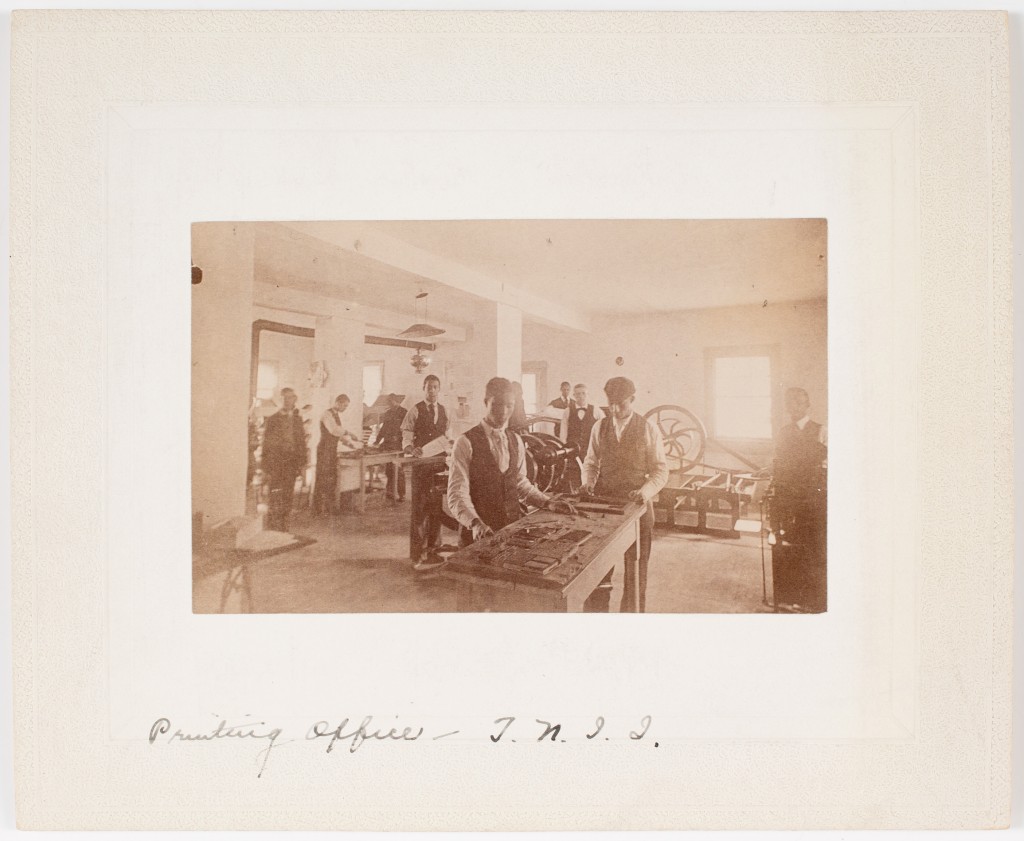
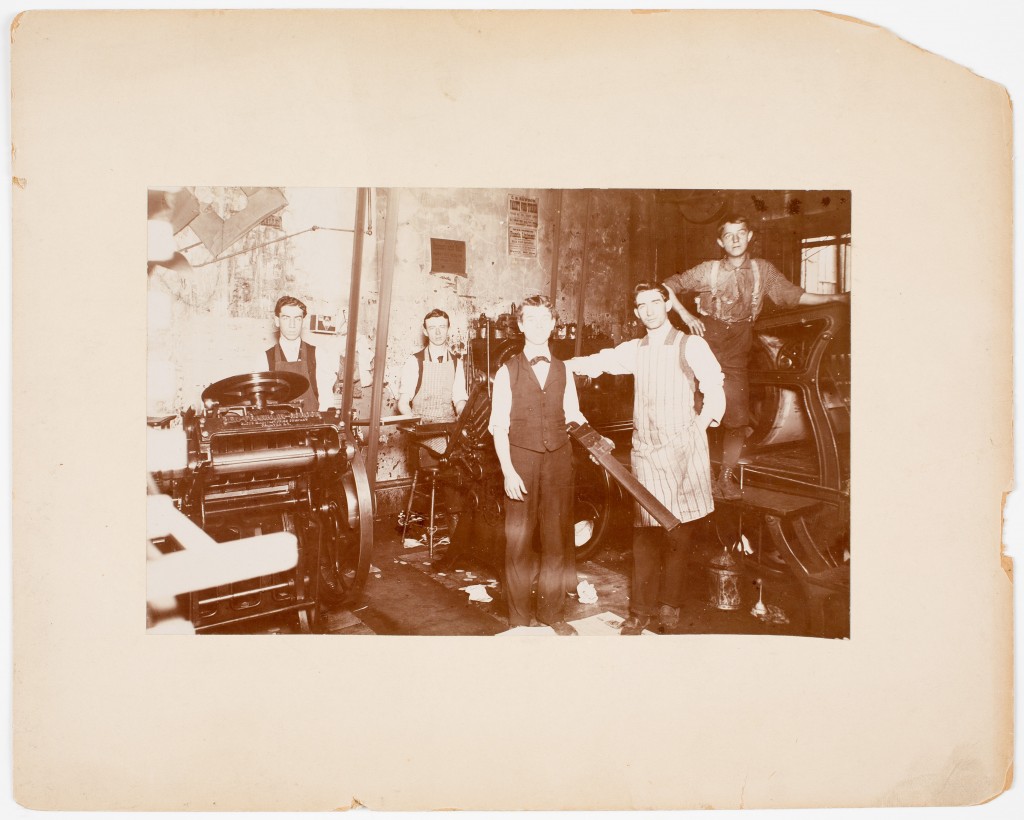
2 thoughts on “Photography: Printers at Work”